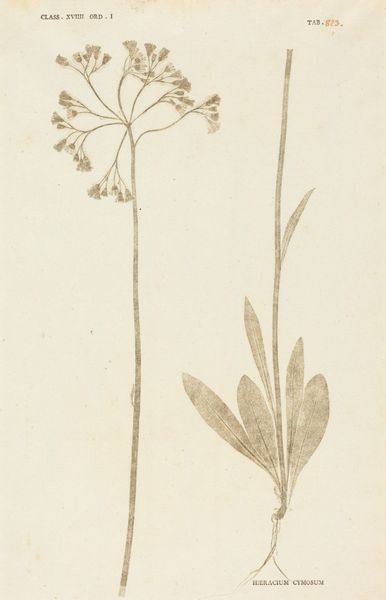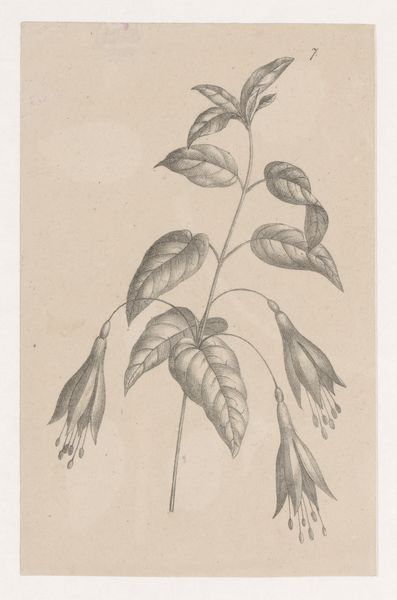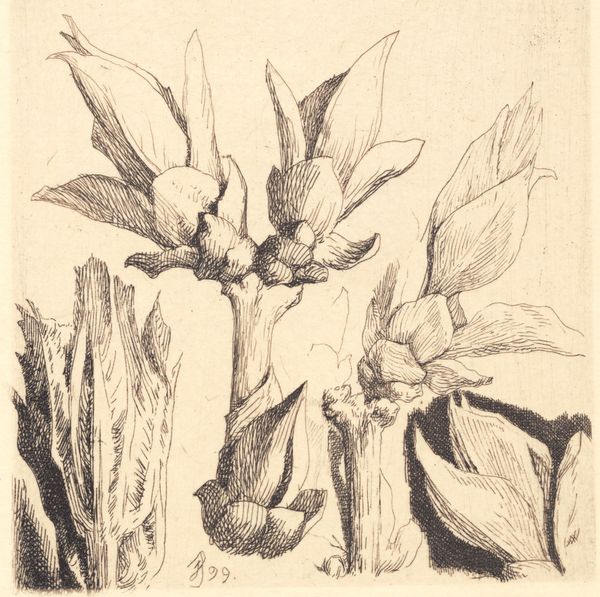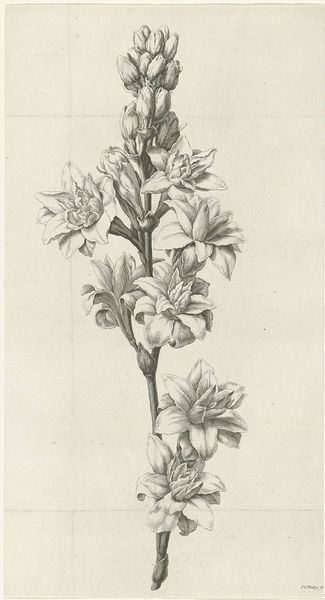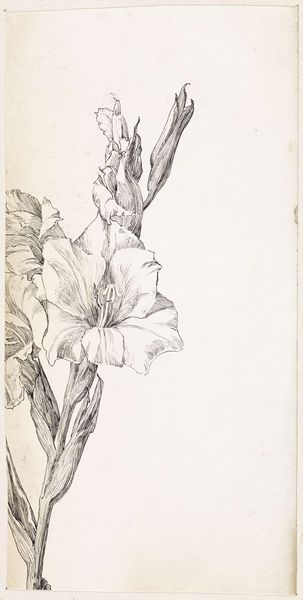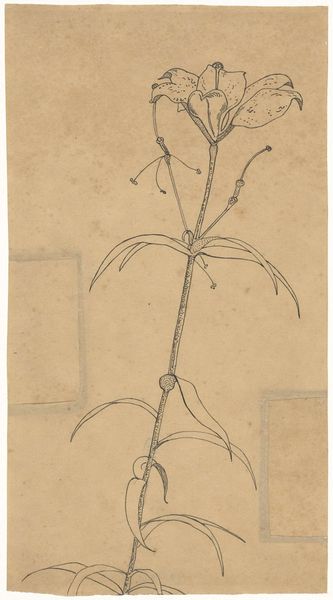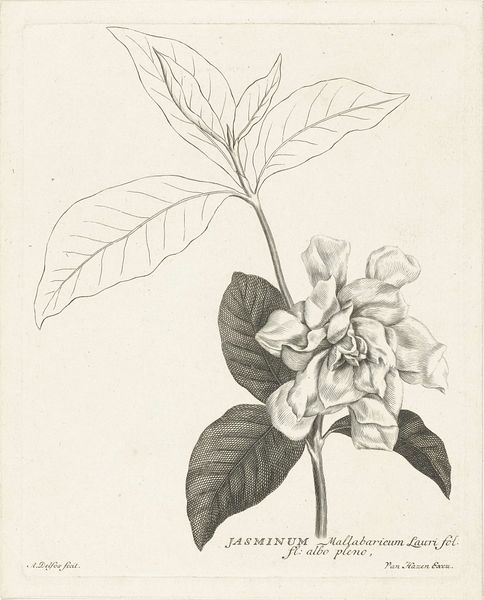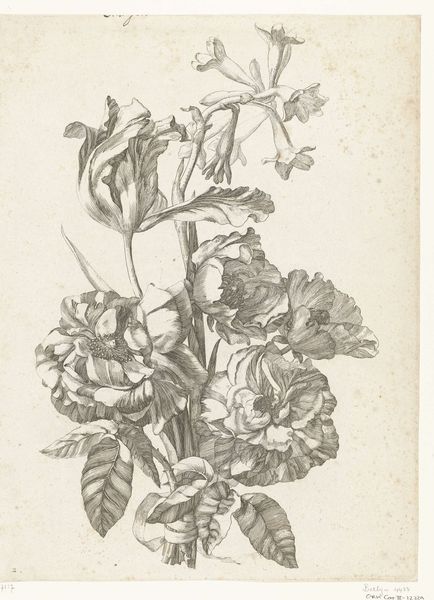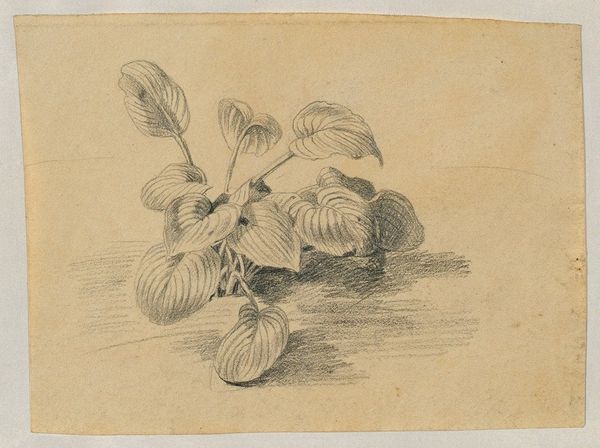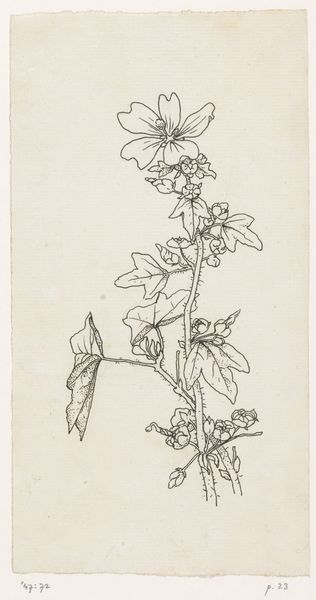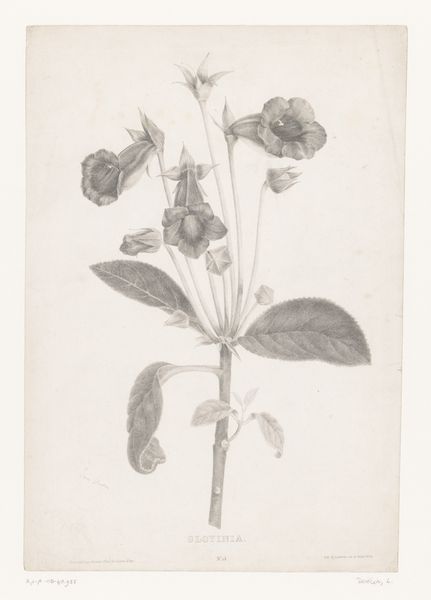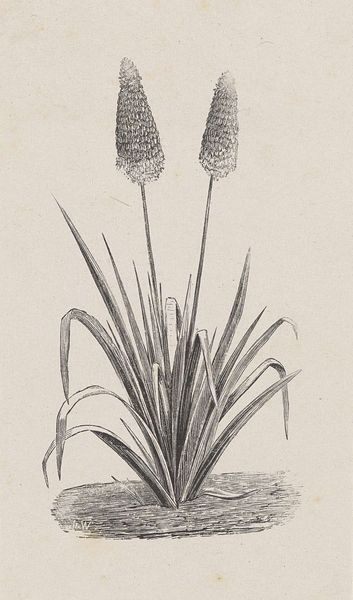
drawing, pencil
#
drawing
#
pencil sketch
#
geometric
#
plant
#
pencil
#
sketchbook drawing
#
pencil work
#
realism
Dimensions: height 165 mm, width 98 mm
Copyright: Rijks Museum: Open Domain
Curator: This delicate pencil drawing, simply titled "Cactus," is attributed to Isaac Weissenbruch, and was created sometime between 1836 and 1912. Editor: My first thought? Simple, almost stark, but so meticulously observed. There's a real tactile quality to those prickles rendered in pencil. Curator: It’s interesting that Weissenbruch, primarily known for his paintings of Dutch landscapes, turned his attention to a cactus. The cactus, an exotic object, became a subject for artistic and scientific study in Europe from the 19th century, signaling both the rise of global trade networks and also a new sense of how the domestic space might be reimagined by bringing nature "inside." Editor: Absolutely, and looking closer, the work really highlights the physical act of drawing. You can see the layering of pencil strokes, building up the form of each pad, creating a tangible sense of weight and texture. This reminds me that during this period, sketching was the means of quick note taking, to then develop larger, finished works. Curator: Indeed. Weissenbruch was very much part of the Hague School, an artistic circle centered in the Netherlands. They prized realism, though, typically in the context of landscape and genre paintings rather than botanical studies. Do you find that the use of pencil here makes this realism more, or less, effective? Editor: Less? Not at all. The pencil marks, laid bare, offer something that feels inherently truthful, raw, perhaps more so than oil paints could. There's no obscuring the process or the materials here. And that matters. We're faced with a close-up examination of something, which by definition is rough. It brings you face to face with materiality. Curator: It makes me wonder what he intended this piece for. Was it purely an exercise in form and light, or part of a larger study? Weissenbruch’s decision to present it, decades after it was likely made, speaks volumes, I think, about how tastes shifted and how the perceived value of “sketches” rose within artistic circles. Editor: In some ways it also anticipates movements of the later 20th century: conceptual art’s emphasis on process. Perhaps the drawing served a very basic function—studying the Cactus as part of another larger project. However, with his command of the medium, he has revealed, as only he could, a new type of beauty through something rather pedestrian. Curator: It's fascinating to consider Weissenbruch's Cactus through both of our perspectives. He seems to encapsulate a period where the observation of nature became intertwined with artistic and scientific study. Editor: Right, it's the tension between the precision of the natural sciences, coupled with the artist's physical handling of materials, that really gets my attention here.
Comments
No comments
Be the first to comment and join the conversation on the ultimate creative platform.
